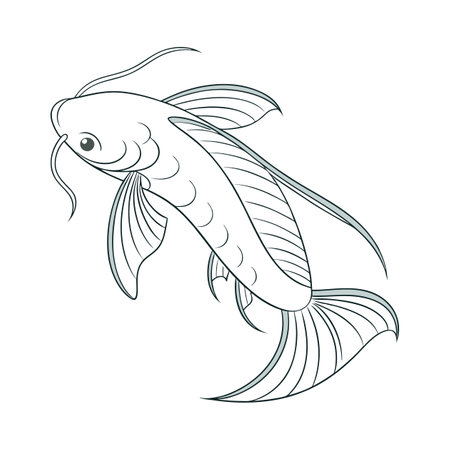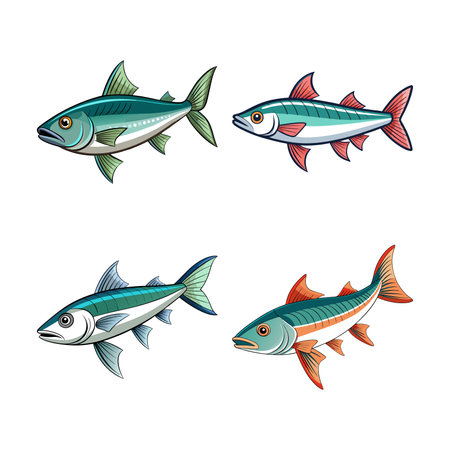Introduction: The Allure of Off-the-Beaten-Path Brown Trout Fly Fishing
For passionate fly fishers across the UK, few experiences rival the thrill of discovering an untouched waterway brimming with wild brown trout. While iconic beats on the Test or Tay have their own magic, there’s a growing movement among seasoned anglers to seek out lesser-known rivers, secluded streams, and hidden lochs far from the crowds. These secret spots offer more than just solitude—they deliver a sense of adventure, demanding both skill and adaptability. The rewards are undeniable: unpressured fish that fight hard, pristine landscapes, and often a deeper connection to traditional British angling heritage. Yet, these untrodden venues come with unique challenges, from tricky access points to unpredictable water conditions. It’s this blend of uncertainty and potential reward that makes exploring off-the-beaten-path brown trout fisheries so captivating for those who value both the sport’s technical demands and its timeless spirit.
Key Factors for Selecting Hidden Brown Trout Waters
When scouting for the best unknown spots for brown trout fly fishing in the UK, anglers must weigh several essential factors to ensure both success and respect for local environments. These considerations help maintain the unique charm of these lesser-known fisheries while maximising your chances of a memorable catch.
Access Rights and Permissions
Unlike some countries where fishing rights are public, the UK is known for its complex system of riparian ownership and club-controlled waters. Always confirm access rights before planning your trip—trespassing can lead to hefty fines or strained relations with local communities. Secure day tickets from angling clubs, private estates, or online booking systems wherever necessary.
Typical Access Scenarios
| Type of Water | Access Requirement | How to Obtain Permission |
|---|---|---|
| Private Estate Rivers | Permit/Day Ticket | Contact estate office or online platform |
| Angling Club Stretches | Membership/Guest Ticket | Apply via club website or local tackle shop |
| Public Waters (rare) | No Permit Needed* | Check council guidelines; may still require rod licence |
*Note: Most UK waters require either a permit or Environment Agency rod licence as a minimum.
Understanding Seasons and Water Conditions
The open season for brown trout varies by region, typically running from March to October in England and Wales, with slight variations in Scotland and Northern Ireland. Water levels, clarity, and temperature all play pivotal roles in trout behaviour—hidden streams often fish best after rainfall but may become challenging during summer droughts. Checking river gauges and speaking to local anglers will give you an edge.
Seasonal Considerations Table
| Region | Main Season Dates | Prime Water Conditions |
|---|---|---|
| England & Wales | March–October | Slightly coloured water after rain; moderate flows |
| Scotland (Lowlands) | March–October (varies) | Crisp spring mornings or mild autumn days, steady levels |
| Northern Ireland | Largely April–September | Mild temperatures, gentle current, post-spate periods |
Local Etiquette and Responsible Angling
The etiquette of wild brown trout waters is steeped in tradition. Practise catch-and-release wherever possible, use barbless hooks, and avoid wading through spawning gravels. Respect fellow anglers’ space—on small streams especially, leapfrogging beats is common courtesy. Engage with local clubs or landowners; their advice often leads to secret spots and ensures youre welcome back. Finally, always leave no trace: pack out litter and treat every fishery as if it were your own backyard.
Tactical Tip:
The most productive hidden waters reward stealth and observation—take time to study insect activity and stream structure before casting your first fly.

3. Top Secret Spots Across England, Scotland, and Wales
Hidden Gems for the Discerning Angler
If you’re seeking brown trout waters far from the crowds, the UK offers an abundance of underrated fisheries that remain closely guarded secrets among local anglers. These spots not only provide technical challenges but also offer a chance to experience wild landscapes and unspoiled habitats. Here’s a curated list spanning England, Scotland, and Wales—each with its own unique appeal for those in pursuit of trophy browns.
England: Wild Chalkstreams of Hampshire and Wiltshire
Beyond the famed Test and Itchen lie lesser-known chalkstreams like the River Anton and River Avon (Wiltshire stretch). These rivers flow through tranquil countryside, boasting gin-clear water, abundant hatches of upwinged flies, and challenging, selective trout. The wild fish here respond best to subtle presentation and classic dry fly tactics—perfect for those who relish technical fishing in serene settings.
Scotland: Remote Highland Burns
Venture north to the Scottish Highlands and you’ll find countless burns hidden amongst heather-clad hills. Streams like the River Dionard in Sutherland or the Allt Dearg on Skye offer true wilderness experiences, where wild browns display stunning colours and fierce fighting spirit. Access often requires a good hike and careful navigation—rewarding anglers who value solitude, scenery, and adventurous wet fly or nymph tactics tailored to fast-flowing water.
Wales: Untamed Mountain Lakes
The Welsh uplands are peppered with remote llyns such as Llyn Cwm Llwch (Brecon Beacons) or Llyn Cau (Cadair Idris). High-altitude environments create hardy brown trout that feed opportunistically on terrestrials and emergers swept across windswept surfaces. Successful anglers adapt by using traditional Welsh patterns or bushy dry flies to match changing conditions—a true test of skill in dramatic mountain surroundings.
What Makes These Spots Unique?
Each of these venues stands apart due to its distinct environment and angling challenge. Chalkstreams demand finesse; Highland burns reward perseverance; Welsh lakes test your adaptability. What unites them is a sense of discovery—these are waters where every cast brings the possibility of connecting with truly wild brown trout, far from the well-trodden banks of more famous rivers.
4. Tactical Approaches and Local Fly Patterns
When pursuing brown trout in the UK’s lesser-known waters, a tactical mindset is paramount. These spots often see little angling pressure, making the trout both less wary and more attuned to their unique environment. To gain an edge, anglers must tailor their strategies to each locale’s specific conditions and aquatic life.
Adapting Your Tactics for Untouched Waters
The relatively undisturbed nature of these fisheries means that stealth becomes your greatest asset. Approach pools from downstream and keep a low profile along overgrown banks. Light tippets (4X or finer) are typically sufficient, as the trout have not developed excessive caution due to frequent human intrusion.
Region-Specific Fly Patterns
Local fly patterns can make all the difference when targeting wild browns in remote British rivers and lochs. Below is a table highlighting some tried-and-true regional patterns:
| Region | Key Pattern | Description |
|---|---|---|
| North Yorkshire Moors | Snipe & Purple | A classic soft hackle, deadly during spring olive hatches. |
| Dartmoor | Dartmoor Blue Upright | Mimics small upwinged flies found in peaty streams. |
| Scottish Highlands | Loch Ordie | Bushier palmered fly, ideal for loch surface work on breezy days. |
| Welsh Uplands | Black Gnat (small) | Replicates numerous local terrestrials landing on the water. |
The Art of Presentation: Matching Local Aquatic Life
Success often hinges on matching your presentation style to the behaviour of indigenous insects and fish. In slow, gin-clear chalkstreams, a delicate upstream dry-fly cast with minimal disturbance mimics emerging olives perfectly. For tumbling moorland burns or highland lochs, try traditional wet-fly teams swung across current seams; this stirs aggressive takes from resident browns patrolling margins and riffles. Always observe the water closely—local hatches and insect life can change by the hour, so be prepared to switch patterns and tactics accordingly for optimal results.
5. Respecting the Waters: Conservation and Access
When exploring the best unknown spots for brown trout fly fishing in the UK, it’s crucial to remember that these hidden gems require a deep commitment to river stewardship. The health of our rivers and wild fisheries depends on anglers following established British conservation practices, which ensure that these unique environments can be enjoyed by future generations.
The Importance of Responsible Angling
British angling tradition places a strong emphasis on respect—for the water, the fish, and fellow anglers. Practising catch-and-release, using barbless hooks, and handling trout with wet hands are not just good etiquette; they are vital measures to reduce stress on fish populations, especially in lesser-known rivers where stocks may be more vulnerable.
Adhering to Local Regulations
Many of these secretive brown trout waters are managed by local angling clubs or private syndicates. Always secure permission before fishing and adhere strictly to any regulations regarding seasons, bag limits, or fly patterns. This not only preserves access but fosters goodwill with landowners and local communities who are often the stewards of these pristine environments.
Promoting Sustainable Practices
Sustainable angling means leaving no trace—removing all litter, refraining from disturbing wildlife, and avoiding sensitive spawning areas during key periods. Anglers should also report invasive species sightings and water quality issues to relevant authorities, supporting broader conservation efforts across the UK’s river systems.
Community Engagement and Education
Sharing knowledge about river conservation with fellow anglers is vital. Participate in local clean-up days or volunteer with organisations like the Wild Trout Trust. By actively engaging in conservation initiatives, you help protect these little-known fisheries for both present enjoyment and future discovery.
In summary, exploring Britain’s best unknown brown trout spots is a privilege that comes with responsibility. Embrace sustainable practices and champion river stewardship wherever you cast your line—so that these magical waters remain healthy havens for wild trout and those who pursue them.
6. Planning Your Off-Grid Adventure
Getting There: Navigating Remote Waters
Reaching the UKs lesser-known brown trout fly fishing gems often means venturing off the beaten path. Public transport can be patchy in rural regions, so hiring a car is usually the most practical option. For truly secluded beats, be prepared for single-track lanes and unmarked laybys—pack an up-to-date OS map or ensure your satnav covers rural postcodes. If you’re headed into Scotland’s wilds or Wales’s uplands, check local bus routes but don’t rely on mobile signal in every valley.
Kit Essentials for British Conditions
The British climate is famously changeable, especially near water. Prioritise breathable, waterproof waders, a sturdy pair of boots with good grip for slippery banks, and layered clothing to adapt to quick shifts from sunshine to showers. Don’t forget a well-fitting hat for sun or drizzle, polarised sunglasses for spotting trout, and a lightweight packable rain jacket. For flies, bring classic patterns such as the Klinkhammer, Pheasant Tail Nymph, and traditional wet flies—local variations can be picked up in village tackle shops. Always carry insect repellent and sunscreen; midges and UV rays are both formidable adversaries.
Handy Extras
- Small first aid kit
- Reusable water bottle (many remote spots have no facilities)
- Thermos flask for tea—quintessentially British!
- OS Explorer Map relevant to your destination
Blending Fishing with Local Culture
One of the joys of exploring unknown waters is discovering the communities around them. Plan to stop at local pubs after your session—a hearty pie or fresh fish supper is the perfect end to a day’s casting. Many villages have fishing heritage museums or historic market days; time your visit to coincide for a richer experience. Chat with locals at small angling shops; they’ll often share recent hatch information or point you towards overlooked stretches of river.
Respect the Land and Traditions
Remember that many prime spots run through private estates or common land—always seek permission where necessary and follow the Countryside Code: leave gates as you find them, take litter home, and tread lightly. Supporting regional B&Bs and farm stays also helps sustain these special places for future anglers.
By planning thoughtfully and embracing both the challenge of remote fishing and the rhythms of rural life, you’ll not only increase your chances of landing a stunning wild brown trout—you’ll also savour the true spirit of Britain’s hidden waterways.

